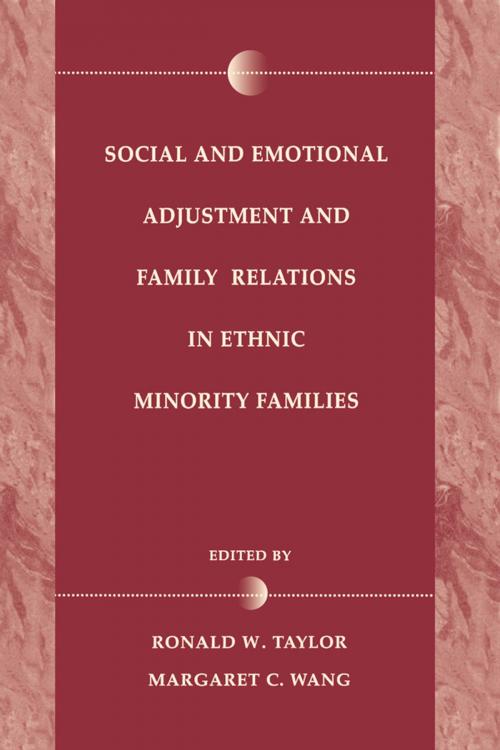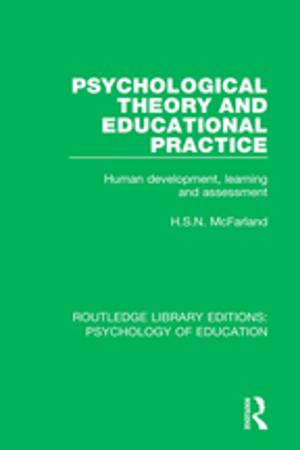Social and Emotional Adjustment and Family Relations in Ethnic Minority Families
Nonfiction, Reference & Language, Education & Teaching, Educational Theory, Multicultural Education| Author: | ISBN: | 9781135452698 | |
| Publisher: | Taylor and Francis | Publication: | November 26, 2013 |
| Imprint: | Routledge | Language: | English |
| Author: | |
| ISBN: | 9781135452698 |
| Publisher: | Taylor and Francis |
| Publication: | November 26, 2013 |
| Imprint: | Routledge |
| Language: | English |
This collection of essays addresses issues related to the intersection of family relationships and several contexts for the social and emotional development of ethnic minority adolescents. The papers are organized in sections under subtitles which reflect three contextual frames through which these issues may be examined. The first section focuses on the relationship between economic factors and resources on the one hand and family relations as environments for development on the other. The next part focuses on family and peer networks and relations as contexts for the emotional and social development of adolescents. The last section takes neighborhood and school as contexts for and determinants of social and emotional adjustment in adolescence.
Like much of the extant work and current thought concerning development in ethnic minority children and adolescents, the authors have highlighted the more stressful and negative aspects of these several contexts. There are a few explicit and several implicit references made to supportive and more positive contexts and manifestations of relationships which frame the developmental experiences of ethnic minority adolescents. These serve as a reminder that many ethnic minority adolescents do overcome the odds against success and grow into healthy and wholesome adults. However, in large measure, this book is a contribution to our understanding of the problematic circumstances under which a significant segment of the population exists, reminding us that life for ethnic minority adolescents is difficult. The fact that some of these young people manage to overcome the negative and stressful aspects of their experiences and defy the implicit prediction of failure to thrive is truly remarkable.
This collection of essays addresses issues related to the intersection of family relationships and several contexts for the social and emotional development of ethnic minority adolescents. The papers are organized in sections under subtitles which reflect three contextual frames through which these issues may be examined. The first section focuses on the relationship between economic factors and resources on the one hand and family relations as environments for development on the other. The next part focuses on family and peer networks and relations as contexts for the emotional and social development of adolescents. The last section takes neighborhood and school as contexts for and determinants of social and emotional adjustment in adolescence.
Like much of the extant work and current thought concerning development in ethnic minority children and adolescents, the authors have highlighted the more stressful and negative aspects of these several contexts. There are a few explicit and several implicit references made to supportive and more positive contexts and manifestations of relationships which frame the developmental experiences of ethnic minority adolescents. These serve as a reminder that many ethnic minority adolescents do overcome the odds against success and grow into healthy and wholesome adults. However, in large measure, this book is a contribution to our understanding of the problematic circumstances under which a significant segment of the population exists, reminding us that life for ethnic minority adolescents is difficult. The fact that some of these young people manage to overcome the negative and stressful aspects of their experiences and defy the implicit prediction of failure to thrive is truly remarkable.















